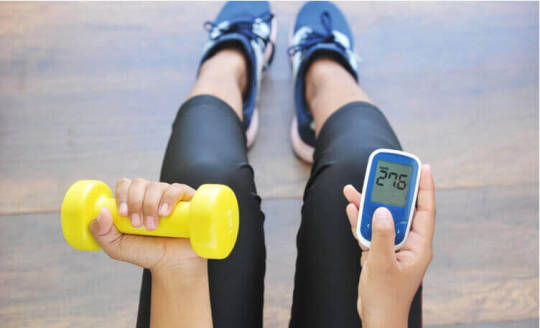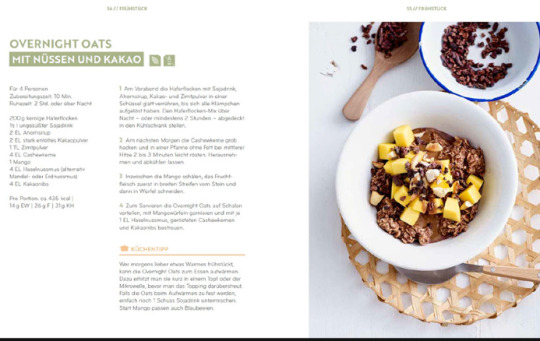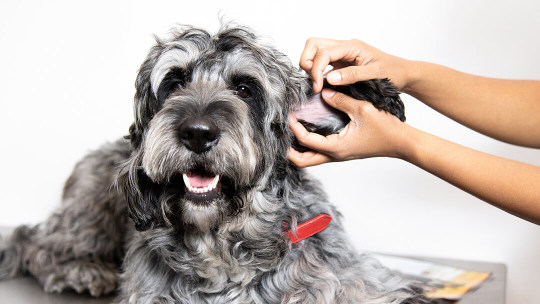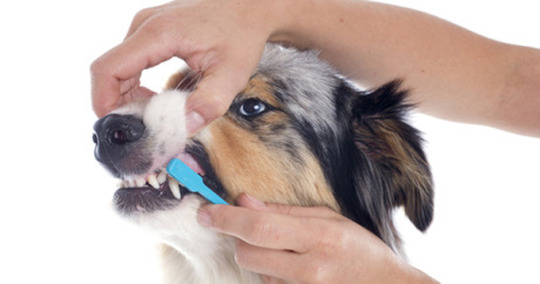#5 healthy tips on how to stay healthy and fit
Note
Do you have like a top 5/10 or something of tips for guys starting out gaining?
Definitely! Here are some important things to know when you’re starting out:
1. Set an initial goal - you can go beyond if you want to but have a reasonable starting goal. Make sure you feel comfortable in your body now and in the future. You’re working hard for this new body, make sure you’re gonna love it!
2. Do what’s comfortable - don’t let encouragers/feeders make you risk your health, go way outside your comfort zone, etc. for their own pleasure. You’re meant to have fun with all this, don’t take those creeps seriously!
3. Bloat - testing the limits of your stomach can be uncomfortable but it’s important for capacity, so using soda or water to bloat is great for stretching yourself, just make sure to listen to your body! When you’re all filled up, lean back and enjoy that sloshy belly (maybe see how well those size 28 pants are fitting now 👀)
4. Stay healthy - this sounds weird but you can be big and healthy. I know it seems fun (and easy) to stuff yourself with fast food and guzzle down gainer shakes and boost, but your body is not gonna last long with that. Let your body grow plump naturally by gorging on foods that are still nutritious (you can still have a boost or fast food but don’t have that be your primary diet 😉). And make sure to walk plenty and use your body (get out and show off that body you’re working on!)
5. Budget - make sure you can afford your own growth. You’re gonna be popping buttons, ripping seams, guzzling down drinks, and gorging on feasts, so make sure you can still clothe and feed yourself
78 notes
·
View notes
Text
Organize Your Life with Tips for a Stylish, Productive Space | IT GIRL DIARIES
In today's fast-paced world, staying organized and productive while keeping a stylish space is essential. Creating an environment that feels fresh, clean, and aesthetically pleasing can boost motivation and mental clarity.
Here's how you can organize your life and space like an "IT girl" to keep your productivity on point :
1. Keep It Clean and Clutter-free 🫧🧼
A clutter-free space reflects a clutter-free mind. Dedicate time each week to tidying up your environment. Pay special attention to your bed and work areas, where you spend the most time. Clean pillows regularly to promote good skin and hair health. A clean space not only looks chic but also fosters a sense of calm and order.
2. Incorporate Fresh and Greenery 🍏🪴
Fresh air and greenery can transform any room. Consider adding indoor plants or fresh flowers to your living space. If you’re into healthy habits, you can even take it further by preparing a daily green juice with spinach, kale, cucumber, and other vibrant ingredients to match the aesthetic! This not only adds color but helps maintain a healthy body and mind.
3. Stylish Organization Tools 📖📕
Invest in minimalistic, stylish storage solutions—think sleek organizers, chic bins, or gold-accented trays. Everything should have its place, from your skincare products to supplements like magnesium and zinc. Neat storage keeps your space looking polished and makes it easier to find everything you need.
4. Create a Wellness Corner 🧖🏽♀️
Set up a small area for your self-care routine. This could include your skincare products, supplements, a diffuser, and even a cozy chair for relaxing. This space can help you stay on top of your health habits, like drinking hot lemon water in the morning or taking your daily zinc and ashwagandha for stress relief.
5. Stay Hydrated and Energized 💧💪🏽
Stylish glass water bottles or tumblers not only keep you hydrated but also serve as chic desk accessories. Infuse your water with lemon or fruit for added variety, and always keep it within reach while you work. Hydration is key to staying energized and productive throughout the day.
6. Incorporate a Fitness Routine🏋️
Your space should encourage movement and wellness. Keep a section free for indoor workouts like cycling or skipping, which you can do even if you're busy. A stylish yoga mat or exercise equipment can blend into your decor while reminding you to stay active.
7. Aesthetic Motivation
Use wall art, vision boards, or inspirational quotes that reflect your goals. Choose colors and designs that align with your personal style to keep your space motivating. Keeping your goals visible can help you stay productive, whether it's maintaining your fitness routine or sticking to a clean eating plan.
____
your daily talk with @colebabey888 🎀
#it girl journey#it girl#becoming that girl#becoming the it girl#that girl#organization#lifestyle#clean girl#clean girl aesthetic#early 2000s#pink#fashion#pink aesthetic#branding#pink core#colebabey888#makeup#dream girl journey#dream life#girlblogger#this is a girlblog#live laugh girlblog#girlblog aesthetic#girlblogging#gaslight gatekeep girlblog
31 notes
·
View notes
Text
Strength Training for Beginners: A Comprehensive Guide
Strength training is an essential component of overall fitness, providing numerous benefits such as increased muscle mass, improved bone density, and enhanced metabolism. If you're new to strength training, getting started can feel overwhelming, but with the right guidance, it can be both enjoyable and rewarding. This comprehensive guide will walk you through the basics of strength training for beginners.
Understanding Strength Training
Strength training, also known as resistance training, involves exercises that use resistance to build muscle strength, endurance, and size. This resistance can come from various sources, including free weights, weight machines, resistance bands, or even your body weight.
Benefits of Strength Training
Increased Muscle Strength: Strength training helps to build and strengthen muscles, making everyday activities easier and reducing the risk of injury.
Improved Bone Health: It stimulates bone growth and can help prevent osteoporosis, especially important as we age.
Boosted Metabolism: Muscle is more metabolically active than fat, so building muscle through strength training can help increase your resting metabolic rate, aiding in weight management.
Enhanced Functional Strength: It improves your ability to perform daily tasks, such as lifting, carrying, and bending.
Getting Started
1. Consult a Professional
Before starting any new exercise program, especially if you have any health concerns, it's wise to consult with a healthcare professional or a certified personal trainer. They can help tailor a program to your specific needs and ensure you exercise safely.
2. Set Clear Goals
Identify what you want to achieve through strength training. Whether it's gaining muscle, losing weight, or improving overall fitness, having clear goals will guide your training program.
3. Start with Basic Exercises
Begin with compound exercises that work multiple muscle groups simultaneously. These include:
Squats: Targets the legs, glutes, and core.
Deadlifts: Works the back, glutes, and hamstrings.
Push-ups: Engages the chest, shoulders, and triceps.
Rows: Targets the back, biceps, and shoulders.
4. Learn Proper Technique
Focus on mastering proper form and technique for each exercise to prevent injury and maximize results. If you're unsure, consider working with a personal trainer initially to learn the correct form.
5. Gradually Increase Intensity
Start with lighter weights and gradually increase the resistance as you get stronger. Aim for 2-3 strength training sessions per week, allowing at least 48 hours of rest between sessions to allow your muscles to recover and grow.
6. Incorporate Variety
Include a variety of exercises in your routine to target different muscle groups and keep your workouts interesting. This can include different types of resistance exercises, as well as cardio and flexibility training.
Tips for Success
Listen to Your Body: Pay attention to how your body feels during and after workouts. If something doesn't feel right, stop and reassess your form or consult a professional.
Stay Consistent: Consistency is key to seeing results. Stick to your strength training program and make it a regular part of your routine.
Rest and Recovery: Allow your muscles time to recover between sessions to prevent overtraining and reduce the risk of injury.
Fuel Your Body: Eat a balanced diet rich in protein, carbohydrates, and healthy fats to support muscle growth and recovery.
Conclusion
Strength training is a valuable addition to any fitness regimen, offering a multitude of physical and mental benefits. By following this guide and staying committed to your goals, you can build strength, improve your overall health, and enhance your quality of life. Remember, progress takes time, so be patient and enjoy the journey to a stronger, healthier you!
#healthy lifestyle#fitness#healthcare#health tips#tumblr milestone#diet#health and wellness#healthy living#wellness#health#training#wellbeing#workout#fitness motivation#healthy food#gym#gymlife#motivation#strength#strength training#exercise#health and fitness
25 notes
·
View notes
Text
How Regular Exercise Reduces the Risk of Diabetes
Diabetes is a significant health concern affecting millions globally, but the good news is that regular exercise can play a pivotal role in reducing the risk of developing this chronic condition. Regular physical activity is beneficial not only for weight management and cardiovascular health but also for blood sugar regulation and insulin sensitivity. In this article, we will explore how regular exercise helps reduce the risk of diabetes and provide tips for incorporating exercise into your daily routine.

Understanding Diabetes and Its Risk Factors
Diabetes, particularly type 2 diabetes, occurs when the body becomes resistant to insulin or when the pancreas is unable to produce enough insulin. This leads to elevated blood sugar levels, which can cause serious health complications over time. Risk factors for type 2 diabetes include obesity, a sedentary lifestyle, poor diet, and a family history of diabetes.
The Role of Exercise in Diabetes Prevention

Improves Insulin Sensitivity: Regular exercise helps improve the body’s sensitivity to insulin. When you exercise, your muscles use more glucose, reducing blood sugar levels. Over time, this increased glucose uptake by muscles makes your body more responsive to insulin, thereby reducing the risk of insulin resistance.
Helps with Weight Management: Maintaining a healthy weight is crucial in preventing diabetes. Exercise helps burn calories, build muscle, and reduce body fat. Even modest weight loss can have a significant impact on reducing diabetes risk. For individuals who are overweight or obese, losing 5-10% of body weight can greatly improve insulin sensitivity and lower blood sugar levels.
Regulates Blood Sugar Levels: Physical activity helps regulate blood sugar levels by promoting the uptake of glucose into muscle cells. Both aerobic exercises, such as walking, running, and swimming, and resistance training, such as weightlifting, are effective in managing blood sugar levels. Regular exercise also helps to stabilize blood sugar levels throughout the day, reducing the risk of spikes and crashes.
Reduces Visceral Fat: Visceral fat, the fat stored around internal organs, is strongly linked to insulin resistance and type 2 diabetes. Regular exercise helps reduce visceral fat, improving overall metabolic health and lowering diabetes risk.
Enhances Cardiovascular Health: People with diabetes are at a higher risk of developing cardiovascular diseases. Regular exercise strengthens the heart and improves circulation, reducing the risk of heart disease, stroke, and other cardiovascular complications.
Types of Exercise for Diabetes Prevention

Aerobic Exercise: Activities like brisk walking, running, cycling, swimming, and dancing increase your heart rate and help burn calories. Aim for at least 150 minutes of moderate-intensity aerobic exercise per week.
Resistance Training: Strength training exercises, such as weightlifting, bodyweight exercises (e.g., push-ups, squats), and resistance band workouts, help build muscle mass and improve insulin sensitivity. Incorporate resistance training at least two days a week.
Flexibility and Balance Exercises: Activities like yoga and tai chi enhance flexibility and balance, reducing the risk of injuries and improving overall physical fitness. These exercises also promote relaxation and stress management, which are important for diabetes prevention.
Tips for Incorporating Exercise into Your Routine
Start Slow: If you’re new to exercise, start with small, manageable goals. Gradually increase the intensity and duration of your workouts as your fitness level improves.
Find Activities You Enjoy: Choose exercises that you enjoy to make it easier to stick with your routine. Whether it’s dancing, hiking, or playing a sport, enjoyment will keep you motivated.
Make It a Habit: Consistency is key. Schedule regular workout sessions and treat them as non-negotiable appointments.
Stay Active Throughout the Day: Incorporate physical activity into your daily routine by taking the stairs, walking during breaks, or cycling to work.
Monitor Progress: Keep track of your workouts and progress. Celebrate milestones to stay motivated.
Conclusion
Regular exercise is a powerful tool in reducing the risk of diabetes. By improving insulin sensitivity, aiding in weight management, regulating blood sugar levels, reducing visceral fat, and enhancing cardiovascular health, physical activity provides a comprehensive approach to diabetes prevention. Start incorporating regular exercise into your daily routine today to enjoy its numerous health benefits and significantly reduce your risk of developing diabetes.
WE SUGGEST YOU TO BEST SOLUTION FOR BLOOD SUGAR.CLICK TO KNOW MORE HERE
#blood sugar treatment#diabetes treatment#diabetes#type 2 diabetes#blood sugar control#supplements health#sugar control
7 notes
·
View notes
Note
Sounds weird but I’m trying to lose weight after becoming basically very fat from pandemic and mental health issues and just wondering if you and others have any workout recommendations or tips ? I will do it all safely and I eat properly too!
So I gained some weight as well during the pandemic. Here are some things that helped me get back on track.
I bought a Peloton bike, however the app is amazing and I downloaded it to my TV to do other exercises. I also have a Fit Bit to keep track of my steps/exercise. I also make sure to take the dog on a 2 mile walk 3-4x per week...used to be longer but it is hard with my schedule now we are back to in office. One thing is that I am SUPER competitive with others and myself so that helps me try and reach my daily goals. Also you can turn cleaning house or chores into an easy workout. There are also exercises you can find on Pinterest. Like 30 day challenges that are really good depending on where you want to tone.
A thing that is VERY important is a food scale. I weight ALL of my food to the serving size and keep a mental (used to write it down) track of my daily caloric intake.
Foods high in fiber are SUPER important. I eat a Baby Spinach salad every day that I weigh out that has an assortment of veggies. I usually do a protein smoothie in the morning. You can find a list of lean meats that you should try and stick to. The leaner the better and the more ounces you can have. That fattier the meat the more you need to eat less.
Do your BMI and see how much fiber you should be getting daily.
I also have pretty much cut out bread/pasta as much as I can. Every now and then I indulge but carbs sit like a lead weight for me.
I have a printed grocery list so I know exactly what I need each week to stay within budget but also to make healthy choices.
I only have water & milk in the house so no sodas or juices which contain tons of sugar. The milk is for my kiddo but I use personally almond milk. Even got my dad to switch to it from normal milk to help with his high blood pressure. You need to make sure you drink half your body weight in water daily. This will help more than you know.
An app that can help with better food choices is Fooducate. You can scan the barcode of food that is ranked by nutritionists. See where it is scored and search for healthier alternatives. You can also enter in all the food you eat during the day and it will show you where you need to adjust.
Another thing is to keep an itemized budget. When you add up all the $ you spend on eating out/unhealthy, it really knocks some sense into you how much $ you are wasting with bad habits.
When you start to clean eat and exercise, you will feel like crap for a few days but the energy you will have after about 4-5 days will change your life. Believe me.
37 notes
·
View notes
Text
5 Time-Saving Fitness Hacks for Busy Professionals
5 Time-Saving Fitness Hacks for Busy Professionals
As a busy professional, you already know that balancing work, family, and social life can be challenging. Add trying to stay fit and healthy to the mix, and it feels almost impossible! Fortunately, fitness doesn’t have to consume your entire schedule. With the right strategies, you can stay in shape without sacrificing your time or energy.
In this article, we’ll explore five time-saving fitness hacks designed specifically for busy professionals. These tips are easy to implement, require minimal time, and will help you stay healthy no matter how packed your calendar is.
1. Micro Workouts: Small Bursts, Big Results
One of the biggest myths about fitness is that you need to spend hours at the gym to see results. That’s simply not true. With micro workouts, you can break your exercise routine into short bursts throughout the day.
Here’s how it works:
Instead of setting aside an hour for exercise, aim for 5-10 minute sessions multiple times a day.
Incorporate bodyweight exercises like squats, lunges, and push-ups during breaks or between meetings.
By the end of the day, these small sessions will add up, giving you the benefits of a full workout.
Micro workouts are especially effective for busy professionals who struggle to find extended periods of free time.
2. Use Your Commute for Cardio
For those with a long commute, why not turn that time into an opportunity to burn calories? Depending on where you live and work, you can walk or cycle instead of driving or using public transportation. This not only boosts your cardiovascular health but also helps you clear your mind and reduce stress before or after a busy workday.
Even if your commute is too long for walking, consider parking further away from the office or getting off public transit a stop early to squeeze in some extra steps.
3. Get Fit with Desk Exercises
Stuck at your desk all day? Don’t worry—there are plenty of ways to stay active while working. Simple desk exercises can help improve circulation, reduce stiffness, and strengthen muscles without leaving your office.
Try these quick desk exercises:
Seated leg lifts: Lift one leg at a time while seated, holding each for 10 seconds.
Chair dips: Use your office chair for tricep dips (as long as it’s stable!).
Shoulder rolls and neck stretches: Loosen tension from sitting hunched over your desk.
These exercises are great for fitting in some movement throughout your workday.
4. Plan Efficient Workouts with Minimal Equipment
If you have a little extra time for a workout, focus on routines that require minimal equipment but deliver maximum results. Resistance bands, dumbbells, and even your bodyweight can be used for effective strength training at home.
Keep your workout efficient by focusing on:
Compound movements (like squats, lunges, and push-ups) that work multiple muscle groups at once.
High-intensity interval training (HIIT) for a full-body workout in just 20-30 minutes.
By focusing on efficiency, you’ll be able to complete a powerful workout in half the time it would take at the gym.
5. Schedule Your Workouts Like Meetings
One of the best ways to stay consistent with fitness is to treat it like a priority. Many busy professionals find that scheduling workouts into their calendar helps make exercise a non-negotiable part of the day.
Here’s what you can do:
Block off specific time slots for working out, just as you would for meetings or deadlines.
Use your phone’s reminder function or an app to alert you when it’s time for your workout.
Once exercise becomes part of your routine, you’ll be more likely to stick with it long-term.
Conclusion: Make Fitness Fit Your Life
Staying fit as a busy professional doesn’t have to be overwhelming or time-consuming. With these simple, time-saving hacks, you can maintain your health and energy levels while managing a hectic schedule.
Remember, fitness is about consistency—not perfection. Start small, stay consistent, and watch your energy and productivity soar.
#FitnessHacks #BusyProfessional #MicroWorkouts #HealthyLiving #WorkLifeBalance #StayFit #FitnessTips #DeskExercises
3 notes
·
View notes
Text
Cultivating Digital Well-Being: Creating a Balanced Online Presence
Hey Community,
In today's hyper-connected world, maintaining a healthy relationship with technology is more important than ever. With the constant influx of notifications, social media updates, and digital distractions, it's easy to feel overwhelmed and stressed. That's why focusing on digital well-being is crucial. In this blog post, we'll explore practical ways to cultivate digital well-being and create a balanced online presence.
Understanding Digital Well-Being
Digital well-being is about managing your digital life in a way that promotes health, happiness, and productivity. It involves being mindful of how you use technology and ensuring that it enhances your life rather than detracts from it. Here are some strategies to help you achieve a balanced online presence:
1. Set Boundaries with Technology
One of the first steps to digital well-being is setting boundaries. Determine specific times when you will disconnect from your devices. This could be during meals, an hour before bed, or while spending time with loved ones. Creating these tech-free zones helps you stay present and reduces the constant pull of digital distractions.
2. Curate Your Online Environment
Take control of your digital space by curating the content you engage with. Unfollow or mute accounts that don't bring you joy or add value to your life. Instead, surround yourself with positive, inspiring, and educational content. Platforms like MeWe allow you to tailor your feed to reflect your interests and values, making it easier to create a healthy online environment.
3. Practice Mindful Usage
Mindful usage of technology means being intentional about how and why you use your devices. Before picking up your phone or opening a new tab, ask yourself what you hope to achieve. Are you looking for information, connection, or just a distraction? By being aware of your intentions, you can make more conscious choices about your digital interactions.
4. Take Regular Breaks
Incorporate regular breaks into your digital routine to prevent burnout and maintain focus. Use techniques like the Pomodoro method, which involves working for 25 minutes and then taking a 5-minute break. These short breaks can help you recharge and improve your productivity.
5. Prioritize Offline Activities
Balance your online life with offline activities that promote well-being. Spend time in nature, engage in physical exercise, read a book, or practice a hobby. These activities can help reduce stress and provide a refreshing break from screens.
6. Engage in Digital Detoxes
Consider doing a digital detox periodically. This could be a weekend without social media, a day without emails, or even a few hours without any screens. Digital detoxes can help reset your relationship with technology and provide a deeper sense of relaxation and clarity.
7. Use Technology to Enhance Well-Being
Technology can be a powerful tool for well-being if used correctly. Utilize apps and tools that promote health, such as meditation apps, fitness trackers, and time management tools. These can help you stay on track with your wellness goals and make your digital life more purposeful.
8. Foster Real Connections
While online interactions can be meaningful, they shouldn't replace face-to-face connections. Make an effort to meet friends and family in person, engage in meaningful conversations, and build real-life relationships. This helps create a balanced social life that isn't solely dependent on digital interactions.
Conclusion
Cultivating digital well-being is an ongoing process that requires mindfulness and intentionality. By setting boundaries, curating your online environment, practicing mindful usage, and prioritizing offline activities, you can create a balanced online presence that enhances your life. Let's use technology to connect, inspire, and grow without letting it overwhelm us.
How do you maintain digital well-being in your life? Share your tips and experiences in the comments below. Let's support each other on this journey towards a healthier relationship with technology.
Stay balanced,

2 notes
·
View notes
Text
How to Plan a Week of Healthy Meals
Planning a week of healthy meals can save you time, reduce stress, and ensure you’re nourishing your body with balanced, nutritious foods. Follow these steps to create a meal plan that works for you and your lifestyle.
Step 1: Set Your Goals
Identify Your Nutritional Needs: Consider your dietary preferences, any food allergies, and your health goals (e.g., weight loss, muscle gain, maintaining energy levels).
Balance Your Plate: Aim for a mix of lean proteins, whole grains, healthy fats, and plenty of fruits and vegetables.
Step 2: Create a Meal Plan Template
Breakfast, Lunch, Dinner, and Snacks: Plan for all meals and snacks to avoid impulsive eating.
Use a Planner or App: Use a weekly planner or a meal planning app to organize your meals. This helps visualize your plan and make adjustments as needed.
Step 3: Choose Your Recipes
Select Simple Recipes: Choose recipes that are easy to prepare and fit into your schedule.
Incorporate Variety: Ensure you have a mix of flavors and cuisines to keep your meals interesting.
Batch Cooking and Leftovers: Plan for batch cooking or leftovers to save time on busy days.
Step 4: Make a Shopping List
List All Ingredients: Write down all the ingredients you’ll need for the week’s meals.
Check Your Pantry: Cross-check with what you already have to avoid buying duplicates.
Organize by Section: Group your list by sections (produce, dairy, grains, etc.) to make grocery shopping more efficient.
Step 5: Prep Ahead
Batch Cook Staples: Prepare grains, proteins, and vegetables in bulk to mix and match throughout the week.
Chop and Store: Pre-chop veggies and store them in airtight containers to save time during meal preparation.
Use Freezer-Friendly Meals: Prepare and freeze meals for days when you need something quick.
Sample Weekly Meal Plan
Monday
Breakfast: Greek yogurt with berries and granola
Lunch: Quinoa salad with chickpeas, cucumber, and feta
Dinner: Baked salmon with roasted sweet potatoes and asparagus
Snack: Apple slices with almond butter
Tuesday
Breakfast: Smoothie with spinach, banana, and protein powder
Lunch: Turkey and avocado wrap with a side of carrots
Dinner: Chicken stir-fry with brown rice and mixed vegetables
Snack: Hummus with whole-grain crackers
Wednesday
Breakfast: Overnight oats with chia seeds and blueberries
Lunch: Lentil soup with a side salad
Dinner: Veggie-loaded spaghetti with whole-wheat pasta
Snack: Greek yogurt with honey and walnuts
Thursday
Breakfast: Whole-grain toast with avocado and a poached egg
Lunch: Grilled chicken Caesar salad
Dinner: Shrimp tacos with a mango salsa and a side of black beans
Snack: Mixed nuts and dried fruit
Friday
Breakfast: Smoothie bowl with mixed fruits and coconut flakes
Lunch: Buddha bowl with quinoa, roasted veggies, and tahini dressing
Dinner: Homemade pizza with a cauliflower crust and assorted toppings
Snack: Celery sticks with peanut butter
Saturday
Breakfast: Scrambled eggs with spinach and tomatoes
Lunch: Caprese sandwich on whole-grain bread
Dinner: Beef and broccoli stir-fry with jasmine rice
Snack: Fresh fruit salad
Sunday
Breakfast: Protein pancakes with a side of berries
Lunch: Tuna salad with mixed greens and a lemon vinaigrette
Dinner: Stuffed bell peppers with ground turkey and quinoa
Snack: Dark chocolate and strawberries
Tips for Successful Meal Planning
Be Flexible: Life happens, and plans can change. Be prepared to adjust your meal plan as needed.
Stay Hydrated: Remember to plan your water intake throughout the day.
Listen to Your Body: Adjust portion sizes and ingredients based on your hunger and nutritional needs.
By planning your meals in advance, you can ensure a balanced diet, save time, and reduce the stress of daily meal decisions. Happy planning!
Share your meal planning tips and favorite recipes in the comments below! Let's support each other in creating healthy and delicious meals every week.
2 notes
·
View notes
Text
What is the Best Technique to Lose Weight for Beginners
Introduction
Losing weight can feel like an overwhelming task, especially if you're just starting out. With so many diets, exercises, and tips out there, where do you begin? Let's break it down into simple, actionable steps that can help you achieve your weight loss goals without feeling like you're running a marathon on day one.
Understanding Weight Loss
The Science Behind Weight Loss
Weight loss boils down to a simple principle: you need to burn more calories than you consume. This creates a calorie deficit, prompting your body to use stored fat for energy, which leads to weight loss. It's a balance of diet and exercise, with each playing a crucial role.
Common Misconceptions
There are plenty of myths surrounding weight loss. Some people think you need to starve yourself, while others believe you must spend hours in the gym daily. The truth is, neither extreme is necessary or sustainable. It's about finding a balance that works for you.

Setting Realistic Goals
SMART Goals
Setting goals is essential for tracking progress and staying motivated. Use the SMART criteria to set goals that are Specific, Measurable, Achievable, Relevant, and Time-bound. Instead of saying, "I want to lose weight," try, "I want to lose 5 pounds in the next month by exercising three times a week and reducing my sugar intake."
Short-term vs. Long-term Goals
Short-term goals keep you motivated, while long-term goals help you stay focused on the bigger picture. A mix of both can provide continuous motivation and a clear roadmap to success.
Dietary Changes
Balanced Diet
A balanced diet includes a variety of foods to ensure you're getting all the necessary nutrients. Focus on incorporating more fruits, vegetables, lean proteins, and whole grains into your meals. Avoid fad diets that promise quick fixes but often lack essential nutrients.
Portion Control
Even healthy foods can contribute to weight gain if consumed in large quantities. Learn to listen to your body's hunger and fullness cues. Using smaller plates and paying attention to portion sizes can help you eat less without feeling deprived.
Healthy Snacking
Snacking isn't bad if done right. Choose healthy options like nuts, fruits, or yogurt instead of chips or cookies. These snacks can help keep your metabolism running and prevent overeating at meal times.
Hydration
Staying hydrated is crucial for overall health and can aid in weight loss. Sometimes, our bodies confuse thirst with hunger, leading to unnecessary snacking. Aim to drink at least eight glasses of water a day.
Exercise for Beginners
Importance of Physical Activity
Exercise helps burn calories, builds muscle, and boosts your metabolism. It also has numerous health benefits, including improved mood and energy levels.
Finding the Right Exercise
Find an exercise you enjoy, whether it's walking, swimming, dancing, or cycling. You're more likely to stick with an activity if you find it fun and engaging.
Starting Slow
If you're new to exercise, start slow to avoid injury and burnout. Begin with 20-30 minutes of moderate activity a few times a week, gradually increasing the intensity and duration as your fitness improves.
Consistency is Key
Consistency is more important than intensity. Regular, moderate exercise is more effective and sustainable than sporadic, intense workouts. Make physical activity a regular part of your routine.
Mindset and Motivation
Staying Motivated
Motivation can wane over time, so it's important to find ways to keep it alive. Set regular, small goals, reward yourself for achievements, and remind yourself why you started.

Handling Setbacks
Setbacks are a natural part of any journey. Instead of getting discouraged, view them as learning opportunities. Identify what caused the setback and how you can avoid it in the future.
Building a Support System
Having a support system can make a big difference. Whether it's friends, family, or a weight loss group, having people to share your journey with can provide encouragement and accountability.
Tracking Progress
Importance of Tracking
Tracking your progress helps you stay focused and motivated. It allows you to see how far you've come and what changes you might need to make.
Using Technology
There are numerous apps and devices that can help you track your food intake, exercise, and progress. These tools can provide valuable insights and keep you accountable.
Adjusting Your Plan
As you progress, you may need to adjust your plan. If you hit a plateau or your goals change, reassess your diet and exercise routine to ensure they still align with your objectives.
Conclusion
Losing weight is a journey that requires patience, consistency, and a positive mindset. By understanding the basics, setting realistic goals, making dietary changes, incorporating exercise, staying motivated, and tracking your progress, you can achieve your weight loss goals in a sustainable and healthy way.
FAQs
What is the best diet for beginners?
A balanced diet that includes a variety of fruits, vegetables, lean proteins, and whole grains is best. Avoid extreme diets and focus on portion control and healthy choices.
How often should I exercise?
Aim for at least 150 minutes of moderate aerobic activity or 75 minutes of vigorous activity per week, along with muscle-strengthening exercises on two or more days per week.
How do I stay motivated?
Set small, achievable goals, reward yourself for progress, and surround yourself with a supportive network. Regularly remind yourself of your reasons for wanting to lose weight.
What should I do if I hit a plateau?
Reassess your diet and exercise routine. Sometimes our bodies adapt, so you might need to increase the intensity of your workouts or adjust your calorie intake.
Are there any supplements I should consider?
While it's best to get nutrients from food, some supplements like multivitamins, omega-3s, or protein powder can be helpful. Always consult with a healthcare professional before starting any supplement regimen.
#WeightLossJourney#healthyliving#BeginnerFitness#DietAndExercise#HealthyEating#FitnessGoals#LoseWeight#Wellness#WeightLossTips#Nutrition#HealthyHabits#ExerciseRoutine#PortionControl#Hydration#Motivation#FitnessForBeginners#SmartGoals#BalancedDiet#TrackYourProgress#StayActive
3 notes
·
View notes
Text
Shadow the Hedgehog utilizing their skills and their desire to do good in whatever way they see fit by becoming Santa.
(I'm hella inspired by @spiritsonic's design which you should look at as well as @mysuperlaserpiss (X) and @atomicbell (X) and I may or may not have been listening to WAY TOO MUCH 'I Believe In Santa Clause' and maybe I care a lot about how Santa is actually a feminine form of Saint and I think that fits so well with Shadow's NB tendencies but ANYWAY-)
Let me explain my thoughts:
1- They can teleport. Transportation solved.
2- They are strong. They can carry and do whatever they want wherever they want.
3- They are Short. They can slip in and around places unnoticed (probably better than most because of course they worked with Rouge and picked up tips and tricks from her.)
4- If Amy manipulating time/turning invisible is not JUST a game mechanic and is actually something she can do, you bet your ass Shadow wanted to learn how they could also use the power of chaos to accomplish these things.
5- It's a solitary job about doing good/doing the right thing and staying out of the spotlight, which Shadow I think would relish.
6- Nobody, NOBODY, ever needs to know it was them. If anyone saw them (especially in that getup, maybe with a good thick scarf to hide their face) they'd assume it was whatever local iteration of Santa they have. Nobody would ever suspect Shadow.
7- Shadow follows wishes/requests made in good faith to the letter, and few things are more honest and earnest than a kid's wish.
8- Shadow's version of good is equal parts giving food and candy to hungry people as much as it is lighting a destructive, dangerous factory on fire or punting a corrupt political official straight to the dark side of the moon. You know they'd do it all on Christmas Night.
9- Maintaining the notion that Shadow is immortal and will outlive everyone they care about, I think this could be a really good way for them to both take time and remember those they have lost and do good in their name while also doing the healthy thing and not reflect on that loss all the time.
10- Please we hurt this Gremlin King almost all the rest of the year I wanna just give them a couple of days where they aren't in pain.
#shadow the hedgehog#shth#sonic#sonic the hedgehog#santa#st nicholas#xmas#christmas#(and not just christmas but you know what I mean the idea of santa is old as dirt)#I'm also hella inspired by discworld's Death as written by Terry Pratchett#especially in the book Hogfather#please go read it holy shit please go read it#headcanon#I HAVE THOUGHTS AND FEELINGS AND MAYBE A ONESHOT IDEA ONCE I FINISH OTHER STUFF I'M WORKING ON
33 notes
·
View notes
Text
As a Humss student how can You uphold in physical Fitness infuencing the future?
As a Humss student, staying physically fit is important for your overall well-being and can positively affect your future. Taking care of your body by exercising regularly has several benefits.
Firstly, it helps you stay healthy. Regular exercise keeps your heart strong, makes your muscles and bones sturdy, and even improves your mood. This, in turn, can help you focus better on your studies and give you more energy.
Secondly, staying fit teaches you important skills like discipline and time management. Balancing your studies with exercise shows that you can manage your time well, a skill that will be useful in the future.
When you're physically fit, you're not only taking care of your body but also developing qualities like determination and resilience. These qualities are valued by employers, making you a more attractive candidate in the job market.
Moreover, staying active is a great way to handle stress. As a Humss student, you may face a lot of academic pressure, and regular exercise can be a healthy way to cope with it. This ability to deal with stress positively impacts your mental health, preparing you for challenges in your future career.
In addition, being physically fit sets a good example for your peers. You can inspire others to adopt a healthy lifestyle, creating a positive environment in your community.
Here is the Benefits of having a Exercise in your daily lifestyle.

Tips to increase your Physical Activities
1.Set Realistic Goal
2.Take the stairs
3.Get your friends involved
4.Walk part of your Commute
5.Take regular breaks from sitting
6.Make it fun

Impact Of Physical Activities

In simple terms, by keeping physically fit, you're not only taking care of yourself but also building skills and qualities that will help you succeed in your studies and future endeavors. It's a smart investment in your overall development and can have a positive impact on those around you.
2 notes
·
View notes
Text
Kochen für kleine und große Champions
Servus everyone and welcome to this extra edition of the Müller Mail
I am currently traveling with the DFB team in the USA, but I would like to use the time to present something very special to you today:
My new cookbook "Kochen für kleine und große Champions" 👨🍳 📖

Together with nutritionist Dr. Matthias Riedl, an absolute expert, I am now launching my first book on the subject of nutrition. For me it is important to bring nutrition knowledge to the forefront. The book should not just be a collection of great recipes. It should be a practical guide that helps you to understand the topic of healthy nutrition and to integrate it into your daily life.
I was able to learn a tremendous amount from "Doc Riedl" during the joint making of the book. You will find much of this in the first half of the book. From my point of view, this is an enormously important part.

Did you know that many foods have real "superpowers"? With this book you can awaken your children's curiosity and learn a lot yourself.
Nutrition is not just a fashionable topic, but an essential part of a healthy life. And if we transmit these values to our children at an early age, we prepare them for a life full of vitality and well-being.

Overnight oats with nuts and cocoa
For 4 persons
Preparation time: 10 min
Resting time: 2 hours or overnight
200g Oat flakes
½L unsweetened soy drink
2 tablespoons maple syrup
2 tablespoons defatted cocoa powder
1 tsp cinnamon powder
4 tbsp cashews
1 mango
4 tbsp. hazelnut butter (alternatively almond or peanut butter)
4 tbsp. cocoa nibs
1. in the evening, mix the oatmeal with soy drink, maple syrup, cocoa and cinnamon powder in a bowl until smooth and all the lumps have dissolved. The oatmeal mix above night - or at least 2 hours - covered in the refrigerator.
2. the next morning, coarsely chop the cashews and lightly roast them in a pan without fat over medium heat for 2 to 3 minutes. Remove and leave to cool
3. In the meantime, peel the mango, cut the pulp from the stone first into wide strips and then into cubes.
4. To serve, spread the oat flakes, decorate with the mango cubes and sprinkle with 1 tablespoon of hazelnut butter, toasted cashews and cocoa nibs.
Cooking tip:
If you prefer a hot breakfast in the morning, you can heat the oat flakes overnight in a saucepan or in the microwave before sprinkling them on top.
If the oat flakes become too hard when reheated, add an extra splash of soy beverage.
Blueberries can also be substituted for the mango.

In the book you'll find more than 50 everyday-friendly, quick-to-prepare and tasty recipes for the whole family. From clever ideas for "sneaking" something healthy into kids' mouths to tips for staying fit with healthy food, it's all here.
We have tried to design the book in a way that is understandable and easy for everyone to put into practice. No complicated recipes, but simple, delicious, fun and healthy dishes.
I am convinced that healthy eating is an important key to a fit and happy life. With this book I want to motivate you to try new things in the kitchen and show you how much fun it can be to cook with fresh ingredients.
Positive reviews - I'm glad 😀
The book has only been out for a few days, but the first positive reviews have already started flying in.
I find the one from Eric, who writes at the end, especially funny:
"The ball is in the pot! The home game can begin! 5-delicious Champions League pies for this book! Delicious bullseye for the whole family."
My cookbook is now available
The cookbook "Cooking for Little and Big Champions" is now available on Amazon or in stores. I would be happy if you take a look inside and try out one or the other recipe
So, guten Appetit and stay encouraged!
Euer Thomas
Source: Die Müller Mail
6 notes
·
View notes
Text
10 Tips To A Healthier Dog

We all want our pups to live a long, happy, healthy life and there are things every dog parent can do to help make that happen. Here are 10 tips to help any dog feel happier and healthier.
1. Spay Or Neuter
Spaying stops a female dog from going into heat and can help prevent breast cancer and pyometra, or infection of the uterus. Neutering a male dog can mellow out aggressive behavior and help prevent testicular cancer, prostate disease, and hernias.
2. Vaccinate
By three months of age, the protective antibodies naturally passed along through a mother’s milk have been used up and your puppy needs to be vaccinated to help protect him or her against many common infectious diseases, including leptospirosis, distemper and parvovirus, as well as a rabies vaccination. Your vet may also recommend vaccinations for kennel cough and Lyme disease. Vaccinations will save your dog’s life.

3. Visit Your Vet
Like you, dogs need regular visits to the doctor to ensure good health. An annual health check gives your vet the chance to nip any illness or health concerns in the bud before they can cause big problems and bills. The vet will ask about your pet’s behavior, eating, and exercise habits, while checking your dog’s vital stats. Check at your local pet store for low-cost pet clinics that can help keep costs down.
4. Declare War On Fleas And Ticks
Fleas can cause health problems beyond itchy skin. They can be the source of allergies, anemia, and tapeworms. Fortunately there are a myriad of flea control products available, including Advantage and Frontline, two of the most popular. Monthly applications should be given based on the weight of your dog. Keep in mind when you are gearing up for your flea wars you must treat all your pets, not just the ones where fleas are obvious.
You especially have to be vigilant in warmer months and with global warming those warmer months seem to last longer and longer, which means you may need to extend those summer treatments.
5. Treat Heartworm By Preventing It
Heartworm is very difficult to treat and can be fatal for your dog so prevention is the key. Giving your dog one dose monthly of a tablet, like Heartguard, can stop heartworm before it starts.

6. Exercise Your Dog Every Day
And not just a quick jaunt around the block. Exercise through walking and playing with your dog will keep your little buddy physically fit, mentally healthy, and reduce the chance of belligerent and destructive behavior as well. Regular exercise also helps your dog maintain a healthy weight and heart, while increasing muscle mass. Your dog’s exercise requirements will be different depending on breed, sex, age, and health.
7. Watch Your Dog’s Weight
Lack of exercise and overfeeding is as much a problem in pets as it is in people. Your dog cannot decide how much exercise he or she needs or what kind of food is best to eat; only you can do that. Arthritis, liver disease, and coronary disease are just a few of the health issues facing an overweight dog. To help your dog lose weight, your vet may recommend a mix of exercise and switching to a low-calorie brand of food, or gradually reducing the amount of regular food you feed your dog. If your pup is overweight talk to your vet to figure out the best course of action.

8. Weekly Health Checks
One of the best ways to prevent health issues is to check up on your dog weekly. First, inspect your dog’s coat and skin for swelling, flakes or scabs. Then look into your dog’s ears and eyes for any signs of redness or discharge. Finally watch for any changes in eating or drinking habits. If anything differs from what’s normal for your dog, consult your vet.
9. Stay Away From Dangerous Foods
The ASPCA Animal Poison Control Center compiled a list of foods that could be dangerous, even poisonous for your dog: alcoholic beverages, chocolate, avocado, coffee, fatty foods, macadamia nuts, spoiled or moldy foods, onions and onion powder, grapes and raisins, salt, garlic, yeast dough, and products sweetened with xylitol. Post this list and be sure your family and any caregivers are aware of it.

10. Brush Those Teeth!
Bad breath can be a sign of teeth or gum problems. Particles of food, saliva, and bacteria known as plaque can build up on the gums and teeth and cause infection. If you don’t treat this, infection can result in tooth decay and even move into the bloodstream and affect your pet’s heart, lungs, liver, kidneys, bones, and joints. Inspect teeth and gums weekly, and check with your vet for instructions on regular brushing with canine toothpaste.
9 notes
·
View notes
Text
How to Treat an Itchy Navel Piercing: Tips and Remedies for Relief

Getting a navel piercing can be an exciting way to express yourself, but it's essential to care for it properly to avoid potential issues like infection or irritation. One common problem many people encounter after getting their navel pierced is itchiness around the piercing site. If you find yourself dealing with this uncomfortable sensation, don't fret! In this article, we'll explore some effective methods for treating an itchy navel piercing, ensuring a smooth healing process and an enjoyable piercing experience.
Keep it Clean
Proper hygiene is crucial for preventing infections and alleviating itchiness. Clean your navel piercing daily using a saline solution or a mixture of non-iodized sea salt and warm water. Gently soak a cotton ball or cotton swab in the solution and apply it to the area, holding it there for a few minutes. Afterward, rinse the area with clean water and pat it dry with a disposable paper towel.
2. Avoid Touching and Twisting
Resist the temptation to touch or twist your navel piercing, as this can introduce bacteria and irritants to the area, making the itchiness worse or leading to infection. If you need to touch the piercing, always make sure your hands are clean, and avoid doing so excessively.
3. Choose the Right Jewelry
The jewelry you initially got pierced with may not always be the best fit for your healing process. Consider switching to jewelry made from materials less likely to cause irritation. Titanium, surgical steel, or niobium are hypoallergenic options that can help minimize itching. Additionally, opt for jewelry with smooth edges to prevent snagging and irritation.
4. Apply Warm Compresses
A warm compress can soothe itchiness and reduce inflammation around the piercing site. Dip a clean cloth in warm water, wring out excess moisture, and gently place it over your navel for a few minutes. Repeat this process a couple of times a day to experience relief from itching.
5. Topical Remedies
Certain natural remedies can provide relief from itchiness. Aloe vera gel has anti-inflammatory properties that can soothe irritated skin. Apply a small amount of pure aloe vera gel to the piercing site and let it air dry. Chamomile tea bags, when cooled, can also be placed over the piercing for soothing relief.
6. Avoid Irritating Substances
Stay away from any substances that can irritate your piercing, such as lotions, ointments, or creams. Avoid swimming in pools, hot tubs, or natural bodies of water until your piercing has fully healed. Chlorine and bacteria in these environments can lead to further irritation and even infection.
7. Maintain a Balanced Diet
A healthy diet rich in vitamins and minerals can aid in the healing process. Vitamin C, zinc, and omega-3 fatty acids are particularly beneficial for skin health. Incorporate foods like citrus fruits, nuts, and fish into your diet to support the healing of your navel piercing.
Conclusion
An itchy navel piercing can be bothersome, but with proper care and attention, you can alleviate the discomfort and ensure a smooth healing process. Remember to maintain good hygiene, use appropriate jewelry, and avoid touching or twisting the piercing unnecessarily. If the itchiness persists or is accompanied by signs of infection, such as redness, swelling, or pus, consult a professional piercer or a healthcare provider promptly.
6 notes
·
View notes
Text
Health habit
With this video/ebook course you will learn how to form new healthy behaviors and get rid of the destructive habits that are holding them back.you will discover little-known techniques and principles that make it easy to kick bad habits and create new healthy habits.Topics covered:What are Healthy Habits? Lifestyle ChoicesQuality of Life/Work-Life BalanceGetting the Best out of your Daily RoutinesHealth and Fitness TipsHealthy Diet HacksHow to Get More Quality SleepBenefits of Drinking More WaterAnd much more!Here are some of the things that you will discover in this life-transforming program:The most important 'treasure' in the world that most people don’t realize they have until they lose it.The secret to happiness even if you don’t have heaps of money or mega achievements.3 little-known qualities of healthy habits plus how to avoid unhealthy habits.The truth about the choices that you make in life.5 benefits of having a healthy work-life balance and how you can get the best of both worlds.The ONE common mistake that strains interpersonal relationships5 easy to implement tips to help you slow down in a chaotic world.How to have more time for your work and personal life without staying up late.6 hacks to help you build a daily routine that works for you.
2 notes
·
View notes
Text
WEIGHT LOSS TIPS

You're looking for ways to lose weight, and we're here to help. After all, healthy weight loss is within reach for anyone who's willing to put in the work.
There's no one-size-fits-all approach to weight loss, but there are some general tips that can help you get started. Here are a few of our favorites:
Click here to see my number one way of losing weight quickly
1. Start by making small changes to your diet and exercise routine.
2. Drink plenty of water and avoid sugary drinks.
3. Avoid processed foods and eat more whole foods.
4. Exercise regularly and mix up your workouts to keep things interesting.
5. Find a support system that will help you stay motivated.
6. Be patient and stick with it – weight loss doesn't happen overnight!
7. Celebrate your successes along the way!
Cut Out Processed Foods
You know that processed foods are bad for you. But sometimes it's hard to break the habit of eating them.
I get it. I used to be a processed food addict myself. But once I made the switch to whole, unprocessed foods, I started to feel a lot better. My energy levels went up, and I lost weight without even trying.
So how do you make the switch? It's not as hard as you think. Start by cutting out processed foods from your diet. That doesn't mean you can never eat them again, but try to limit them as much as possible.
Choose whole, unprocessed foods instead. Fresh fruits and vegetables, lean protein, whole grains, and healthy fats are all great choices. When you eat these types of foods, you'll be doing your body a favor health-wise and weight-wise.
Eat More Protein and Fiber
When it comes to losing weight, protein and fiber are your best friends.
Protein helps you feel full longer, which means you're less likely to snack between meals. And fiber keeps you regular, which helps you stay on track with your diet.
So how do you make sure you're getting enough protein and fiber? Try adding more high-protein foods to your diet, like eggs, poultry, fish, legumes, and nuts. And load up on fiber-rich fruits and vegetables, like broccoli, Brussels sprouts, beans, and berries.
Drink Plenty of Water
You know you should be drinking more water, but it's hard to make a habit of it. Here are a few tips to make it a little bit easier:
1. Carry a water bottle with you wherever you go. This way, you'll always have access to water and you'll be more likely to drink it.
2. Set a goal for yourself. Decide how many glasses of water you want to drink each day and work towards meeting that goal.
3. Drink plenty of water before meals. This will help you feel full and eat less.
4. Add fruit or herbs to your water for extra flavor. This can help make drinking water more enjoyable and help you meet your daily intake goals.
Avoid Eating Late in the Night
You've probably been told that it's best to avoid eating late at night if you want to lose weight. And there's a good reason for that.
When you eat late at night, your body doesn't have a chance to burn off those calories before you go to bed. And over time, that can add up to some serious weight gain. So if you're serious about losing weight, try to make dinnertime your last meal of the day.
Get Enough Sleep
Get enough sleep. This is something that's so important, and it's often overlooked. When you're well-rested, you're going to have more energy and be less likely to indulge in unhealthy foods.
So make sure you're getting at least seven or eight hours of sleep every night. And if you can't seem to fall asleep, try reading or doing something calming before bed.
Incorporate Exercise Into Your Daily Routine
Exercise is a key part of any weight loss plan, and it's something that you need to be incorporating into your daily routine.
But it doesn't have to be a huge commitment. Even something as simple as taking a brisk walk for 30 minutes each day can make a big difference. And if you can't fit in a walk at lunch, try going for a walk after dinner.
Just make sure that you're always moving! The more active you are, the more weight you'll lose.
Click here to see my number one way of losing weight quickly
Conclusion
You don't have to go on a crazy diet or spend hours at the gym to lose weight. There are a lot of simple things you can do to drop those pounds and feel better in no time.
Try eating healthy, balanced meals and avoiding processed foods. Get moving and exercise regularly. Drink plenty of water and avoid sugary drinks. And last but not least, stay positive and don't give up on yourself!
Losing weight can be tough, but it's definitely doable with a bit of effort. Try out these tips and see how you feel. You may be surprised at how much easier it is to lose weight when you have a plan!
5 notes
·
View notes